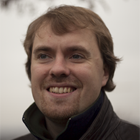Human Pose, Shape and Action
3D Pose from Images
2D Pose from Images
Beyond Motion Capture
Action and Behavior
Body Perception
Body Applications
Pose and Motion Priors
Clothing Models (2011-2015)
Reflectance Filtering
Learning on Manifolds
Markerless Animal Motion Capture
Multi-Camera Capture
2D Pose from Optical Flow
Body Perception
Neural Prosthetics and Decoding
Part-based Body Models
Intrinsic Depth
Lie Bodies
Layers, Time and Segmentation
Understanding Action Recognition (JHMDB)
Intrinsic Video
Intrinsic Images
Action Recognition with Tracking
Neural Control of Grasping
Flowing Puppets
Faces
Deformable Structures
Model-based Anthropometry
Modeling 3D Human Breathing
Optical flow in the LGN
FlowCap
Smooth Loops from Unconstrained Video
PCA Flow
Efficient and Scalable Inference
Motion Blur in Layers
Facade Segmentation
Smooth Metric Learning
Robust PCA
3D Recognition
Object Detection
Layered Optical Flow

Layered models allow scene segmentation and motion estimation to be formulated together and to inform one another. They separate the problem of enforcing spatial smoothness of motion within objects from the problem of estimating motion discontinuities at surface boundaries. Furthermore, layers define a depth ordering, allowing us to reason about occlusions.
In [], we present an optical flow algorithm that segments the scene into layers, estimates the number of layers, and reason about their relative depth ordering using a novel discrete approximation of the continuous objective in terms of a sequence of depth-ordered MRFs and extended graph-cut optimization methods. We extend layer flow estimation over time, enforcing temporal coherence on the layer segmentation and show that this improves accuracy at motion boundaries.
In [], we extend the layer segmentation algorithm using a densely connected Conditional Random Field. To segment the video, the CRF can use evidence from any location in the image, not just from the immediate surroundings of a pixel. Additionally, the CRF drastically reduces runtime of the segmentation step, while preserving the high fidelity at motion boundaries.
PCA-Layers [] combines a layered approach with a fast, approximate optical flow algorithm. Within each layer, the optical flow is smooth and can be expressed using low spatial frequencies. Sharp discontinuities at surface boundaries, on the other hand, are captured by the layered formulation, and therefore do not need to be modeled in the spatial structure of the flow itself, allowing highly efficient layered flow computation.
We also use layered models in the treatment of motion blur []. In a dynamic scene, objects can move and occlude each other. Together with the nonzero shutter speed of the camera, this creates motion blur, which can be complex close to object boundaries; pixel values arise as a combination of foreground and background. Using a layered model allows us to separate overlapping layers from each other, making it possible to simultaneously segment the scene compute optical flow in the presence of motion blur, and deblur each layer independently.
Members
Publications


